Galactic Central, Trantor
![]()
|
|
| |
Back to Index Page |
|
|
GalacticCentral
Trip to the Center of the Milky Way and its Capital City of Trantor
By Hatonn (Christ Michael, Creator Son of Nebadon)
![]() Galactic Central taken from the Book: "Star Wards", by Richard Miller, originally published by the Solar Cross Foundation. Chapter Eleven.
Galactic Central taken from the Book: "Star Wards", by Richard Miller, originally published by the Solar Cross Foundation. Chapter Eleven.
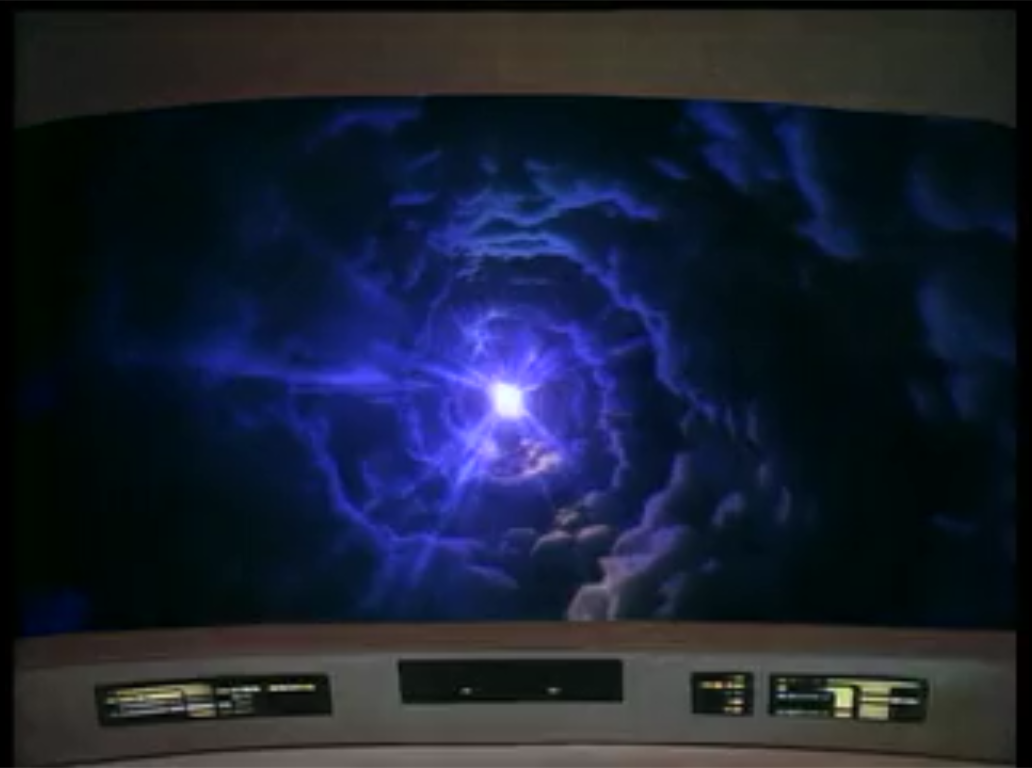
Received by Richard Miller on January 12, 1978, Solar Cross Tape # 24. This book is out-of-print. A copy of the book can be ordered through TheAquarian Perspectives Inter-planetary Mission.
Click on number in parenthesis next to constellation name for further information and picture at the bottom of page. Use navigation link (BACK) to return to text. Numbers in parenthesis are not part of the original text. The galaxies are named by Messier-#, or, simplified, as M-#. Subtitles are not part of original text.
NOTE: The word MAN is not original of the English language but comes from Sanskrit, the whole word is MANU and it refers to the true MAN and WOMAN, pure and without distortion, the image of the Celestial Father.
All texts compiled and edited by Luis Prada, Editor and Publisher of Brother Veritus’ Website and Director of the Brother Veritus’ Community.
TIP: When reading this marvelous text, read it slowly and pause after each paragraph to better visualize the trip, a good analogy for the visual images could be to use the popular science fiction TV-and-movie series Star Trek©, such as some flight scenes of the movie Nemesis.
![]()
![]()
Greetings
 Greetings in the "Light" of Our Radiant One. I am Hatonn. I have been asked to be your tour guide, this your evening, to take you on a little trip to the center of your Milky Way Galaxy and to the Capital City of Trantor.
Greetings in the "Light" of Our Radiant One. I am Hatonn. I have been asked to be your tour guide, this your evening, to take you on a little trip to the center of your Milky Way Galaxy and to the Capital City of Trantor.
Let us for a moment now, all of us, gather together and mentally join our hands. We step now outside the realm of your planet, out beyond the planet Earth, and there we meet the craft which will take us on our little journey.
Traveling Path

Our next view is one referenced to your star charts, for in this view we see the path that we will be traveling. As we look closely now at the chart, we see the constellation that we will first pass through, known to your astronomers as Octans (1). And then beyond, another constellation called Pavo (2), and still beyond, another constellation by the name of Telescopium (3). Our ultimate destination lies within the constellation of Sagittarius (4).
Our craft now, as we depart, will be entering that level known to you as T+4. And purposely we will slow the scanning rate of our viewscreens so that even though we are traveling faster than the velocities of light itself, we shall see the scenes as though they were stationary.
Passing Tucana, Octans and Pavo
Thus, we now depart. And as we depart if we glance to the extreme left side of our course, and well off our course, we see your nearest cosmic neighbor, that which is known to your peoples as the Small Magellanic Cloud (5) and also the Constellation of Tucana (6).
Our immediate course as we now undertake our journey takes us first through the Constellation of Octans and past its three main stars. This area of space is relatively empty of stars and beautiful sights, but ahead lies the Constellation of Pavo and here we find a beautiful sight, with its eleven main stars, including that one known to your peoples as the beautiful Peacock.
These are truly beautiful scenes but what lies before us is the beauty and the majesty of the main part of the galaxy. And so, our craft now speeds swiftly through this sector. And of course, the point of our journey is the Capital City of the Confederation, Trantor.
|
|
|
Map of the Stars, Southern Hemisphere |
Navigating Through Systems M-54, M-70 and M-69
As we approach these new areas of space, our view screen shows us the great area, called again in your terminology, M-54 (7). And here we witness the immense beauty again of the stars, MAN’s heritage throughout all the known universes, the immense gulfs of space to be crossed as we head for our destination.
As we continue, we see the myriads of stars which grow ever more clustered as we approach the heart of this, your galaxy. And before us now lies the beautiful star cluster that you have named the M-70 (8)System.
We note its brilliant yellow central core and the faintly luminous halo which surrounds this system. Beyond is the panorama of stars which lie in our path and through which we will thread our way.
As we continue, we approach the M-69 (9)System and we note its fascinating gold-greenish color. Here the stars have shrunk to insignificance, because of the faintly glowing aura of shining interstellar gas which exists in this region and which obscures the velvet blackness of space so common in other regions.
|
|
| Velvet Blackness of Space As Viewed on Viewscreen "And purposely we will slow the scanning rate of our viewscreens so that even though we are traveling faster than the velocities of light itself, we shall see the scenes as though they were stationary…" |
Navigating through Systems M-22 and M-28
We move on and our craft approaches what lies ahead, a spectacular cluster of stars known to your peoples as M-22 (10), a system of billowing gas and cosmic dust which glows in strange and unusual patterns. And we note what appears to be a huge black finger pointing us onwards toward our next point of interest; a large glowing star cluster surrounded by a luminous haze and brightly lit by the increasing brilliant galaxy’s densely packed stars.
Here, my brothers and sisters, one begins to obtain the view of the majesty that for so long has been denied those resident upon your planet. And, as we proceed, we now approach our next point of interest, the beautiful star cluster of M-28 (11), with its beautiful blue-white center and faintly glowing bluish aura of cosmic gas and dust. The background stars are again beginning to glow brightly now before our vision.
The Dark Corridors of System M-20, the Trifid Nebula
Our craft hurtles onwards as we enter the second third of our trip. In the distance we obtain our first view of the heart of the galaxy. The large red globular cluster in the center is that which is known as the Trifid Nebula (12), famous to your astronomers. And, about us now shines the massed light of thousands of stars, all shining with intense luminosity. The little faint red glow to the side of the Trifid is another famous sight, that known to your peoples as the Lagoon Nebula, bearing the designation of M-8 (13). And, as we continue, note that the stars again thin out near the center of this area.
We continue to draw closer to the Trifid Nebula and view it from a distance of several light years. We again note how the stars appear to be thinning out, as we approach. There appears to be a darkened area which is expanding as we draw ever closer.
Now, we are quickly approaching the Trifid Nebula, known to your peoples as M-20 (12). Above and to the left is another spiral nebula which glows with a bluish light on our screens. The dark chasms of blackness, which divide the Trifid, are the corridors through which we must thread our way, for our destination lies through and beyond this beautiful sight. We will be traversing the dark corridor seen in the bottom central region which is before us.
We draw closer. We note the brilliant white cluster within the nebula and also the yellowish-white cluster of stars in the above left neighboring system. The arrows, illustrated on our view screen, indicate the black holes which inhabit this nebula and which we will use as navigation aids in plotting our course through this glowing fantasy of vibrating color.
We are now only light-minutes from entering the nebula itself and following the long dark chasm which stretches before us. We shall proceed through the glowing walls of light which will flank us on either side.
We are now entering the yawning black chasm which stretches ahead of us. The brightly glowing stars within the nebula pin-prick the soft flowing shades of luminous violet and lavender clouds of pulsating gas which line the walls of the corridor through which we will be passing.
Inside the corridor the black path twists and turns as we slowly move forward. What appears to be a softly flowing billowiness of luminous gas on either side of us is, in reality, stark terrors of churning twisting and whirling magnetic fields of force which could catch our tiny craft and toss it about like a fluff of lint, from your fabrics, caught in the force of a titantic [sic] cyclone. Its beauty and majesty is deceiving, for if we were to touch these walls of glowing splendor we would never arrive at our destination, but would instead be tossed and buffeted about until attracted by the titantic forces of one of the black holes which exist inside of this nebula.
We are now deep inside the nebula and ahead we see the dark area of our exit, It has taken all the navigational skills of our ship’s computer to bring us safely this far, and it would appear that the balance of our journey would be serene and calm by comparison to our two-hour journey through the wild and colorful heart of the nebula itself. As we leave the nebula, avalanches of glowing light parade on either side and above and below us. Prior to the establishment of the navigational beacons which guided our ship’s computer, thousands of our ships were lost forever as they tried to navigate the ever twisting corridors of this nebula.
Navigating The Treacherous Red-Light Corridor to Trantor
What lies ahead of us now is not the calm and peace that blurred eyes and strained nerves might yearn for, but what appears to be a yawning funnel or tube, which our ship’s computer informs us we must pass into and through before our journey is yet complete. Because, before us looms the rotating and twisting avenue through the heart of the approach corridor to Trantor and the splendor of Galactic Central. The maelstrom of forces into which we will enter would terrify the spirits of lesser men. For again, should our craft barely touch the walls of these colossal forces, it would disintegrate as its atoms went screaming off into the depths of this titantic whirlpool.
And now, as we plunge into the mouth, a baleful orange-red chasm appears directly ahead. Around it whirl and rotate oceans of cosmic debris, forever flowing inwards to be swallowed by an unseen force. Our course once again will lead us directly into this gleaming heart of orange-red which now opens before us.
Inside the pulsating tunnel, of sullen red light, appear blazing white-hot bursts of energy on either side. This is surrounded by an orange-pink aura of intense radiation. On our other side there appears to be a softly glowing cloud of tan and grey billowing smoke, highlighted by iridescent streaks of silver-grey and white. Our path takes us directly between these and along the dark central corridor.
The Trantor System
Suddenly we emerge on the other end of this frightening tube of red light, and space explodes into normal blackness and the dazzling, swirling violet spiral of the Trantor system now lies directly ahead of us. The white-hot glow at the center is the brilliant main sequence sun of Trantor, which only registers as a star of fourth magnitude to your earthly astronomers. This is not a spiral nebula before us, but the glowing arms of stellar radiance common to the Trantor system.
Our craft now once again accelerates, and we dart with lightening quickness towards the brilliant central star sun, and within moments we are within the planetary system of Trantor itself.
As we swing past the central sun, our craft barely grazes the outlying fringe of the first planet in this system, which is resplendent with its bluish glow of atmosphere and surrounded by wide and soft glowing silver rings. But our destination, Trantor itself, is the second planet from the sun in this system.
And, as we now swing around the rings, Trantor itself bursts upon our vision. Compared to the colorful billowiness of the star cluster sand nebula through which we have passed, Trantor seems to hang alone, peaceful, on our vision screen. It is wrapped in fleecy white clouds which allow areas of pale blue and soft browns to peek through to us as we gradually lessen our velocity and prepare to enter the atmosphere of Galactic Central. Trantor, the home of the Universal Confederation and also the headquarters of the Solar Cross.
As we are about to enter the atmosphere of Trantor, we cannot help but notice the glowing white aura which reveals the sun’s radiation on this beautiful jewel of a world.
A Little Piece of History of Trantor
However, let us pause for a moment before we descend to the planet’s surface, and let me tell you something about Trantor itself. In the old days of the Galactic Empire, some trillions of trillions of years ago, Trantor was the hub of Galactic Control, the living pulsing source of control for some twenty million star systems. Its location, in the center of the galactic hub, was chosen because the light of the nearby nebulae and star clusters literally tore to shreds the darkness of conventional space; and the Emperor thought that the magnificence of its lighting, that of ten thousand nearby stars, matched only the magnificence of the Imperial Regent himself. Thus, because of its visual splendor as a world, Trantor became Imperial headquarters.
The Empire quickly sealed over the earth and soil of its surface with a metallic sheathing which eventually covered the entire expanse of its seventy-five million square miles of surface area. Thus, the entire planet was converted into a metropolis which covered every inch of the planet’s surface. Not only that, but it burrowed beneath the surface for several miles and raised glittering spires into the skies, for Trantor became the home of some forty billion persons.
The City of Trantor encompassed the surface, the heights and the subsurface of the planet into one gigantic sprawling city. The various areas and levels were interconnected by causeways, walkways, transportation tubes, buildings, offices, stores, warehouses; and beneath the surface, closeted in the basement levels, shopping centers which stretched for square miles. Above the city, in penthouses of spired buildings, amusement centers provided entertainment for the vast population.
My brothers and sisters, one could walk around the world of Trantor and never leave the complexes of buildings or the city itself. It took the cargos of tens of thousands of spacecraft, arriving daily, to supply the materials and goods needed by the awesome size of its population. In return, Trantor supplied The Empire with the administration which guided the affairs of twenty million star systems.
Trantor also untangled the myriads of threads of Galactic Rule which eventually found their way into and out of this hub of Empire. At that time, Trantor was the most densely populated world of all of the worlds of MAN.
But, all this passed in time, and today Trantor is far different. The planet as we see it now is no longer sheathed in plates of imperishable metal. Instead, the soil and earth is once again exposed to the glow of the stars. The current population is some ten billion, and in many areas, parts of the old city have been removed. Today, about the circumference of Trantor, cities still exist as mammoth areas in themselves. But, in addition, there are now suburbs and rural settings pleasant enough to delight the eye of any beholder. But the hub of MAN’s affairs still remains.
Entering Trantor’s Atmosphere
As we now enter the atmosphere, we receive another visual shock, for our vision screens flame and burst into a scintillating and coruscating burst of color, which ranges from intense white through vibrant yellows, opalescent pinks and pastels, all of which seem engulfed in warm and soft glowing colors of smoky white iridescence. This stunningly beautiful sight takes our breath away, and we pause for a moment to watch the ever shifting kaleidoscope of color which whirls and dances through the sky all about us. This phenomena of Trantor’s atmosphere has been a tourist attraction for nearly a trillion, trillion years, and billions upon billions of visitors have been awed and transfixed by the ever changing beauty of color which fluoresces about any ship as it penetrates this planet’s atmosphere, whenever the entry is made on the day side of the planet. This spectacular effect is caused by a combination of peculiar electric, magnetic and gravity forces upon rare and noble gasses, which this atmosphere contains, when meeting the energies contained in the forcefields of our craft.
Now we descend and our craft approaches one of the landing areas on the planet’s surface. Dusk is nearing and the sky turns to shades of clue and gathering gray. Alongside a landing pit stands the guidance tower which will bring our craft into correct alignment with an opening in the planet’s surface.
Landing at the Airport
The view now switches to that of our ship as it approaches a landing site. A platform elevator is the base of our landing and will gradually lower the ship beneath the planet’s surface to an underground, shall we say, parking area. We receive now a closer view of our craft as it gradually descends for a landing. Nothing in the scene indicates the bustle of activity we shortly will encounter when we leave our ship.
Our craft is now safely nestled on the landing elevator platform and is gradually lowered to its underground mooring area. We will descend to the third level and take note of the walls which surround us. Our ship has now reached the level where it will be floated off of this platform and taken to the arrival ship berths where we will disembark to enter the City of Trantor.
As we leave the ship, we are taken to the entrance of the arrival terminal, the hallway and door which now confront us. As we pass through the doorway, a large panoramic window shows us the main passenger area which lies in front of us. Again, elevators which are moving pathways of force, carry us to the main terminal for arriving passengers or visitors.
This terminal is tremendous in size. The roof, as we gaze about, is almost lost in the heights above us. Directional signs float in mid-air and indicate the way to transportation which will carry us to all of the different points of the main city. We have been issued a pass and have received directions to the central district of the planet, which we shall arrive at by means of ground transportation. The ticket we were issued glows with light, as we walk towards the transportation units. It will continue to glow as long as we follow the correctly-colored beams of light which crisscross the floor of this terminal and which lead us towards the correct transportation. Should we stray off our course or lose our way, we merely need to look for the correct colored floor beam coded the same as our ticket, and return to it on the floor. The ticket will then glow brighter when we find it, and brighter still when we start out along the beam in the right direction. Should we turn the wrong way, the ticket will not glow at all. Automatically then, we must proceed in the right direction.
Inside the City of Trantor
Soon we arrive at our destination, and as we step off our transporter we now see the many levels of shops, walkways, terraces, and people, who are also busy with various errands or activity. We are located now on the first level and ahead of us stretches as far as the eye can see, the avenues and walkways of this part of the city. Below, for a considerable depth, stretch other levels, shops, offices and entertainment centers.
This, then, is the City of Trantor, or at least one small area of it. Note the walks, the people, the architecture of the level we are on, and notice in particular the area of the levels below us.
Our walk now takes us to one of the vertical rise shafts which lead in both directions, up and down. Above us are the administrative areas of the Confederation, the headquarters of the Solar Cross, and much more. Below us for many levels are the offices, shopping centers, laboratories, workshops, and ten thousand other activities which occupy MAN.
We walk out now on one of the connecting walkways which cross this vertical shaft. We can glance above and below our present level. Upper levels are all above the planet’s surface and are contained within the large surface structures or buildings that we noticed earlier.
Final Words
My brothers and sisters, we have traveled hundreds of what you describe as light years, in our journey to this world. It is also true that I brought you through the most colorful part of our journey through the various star clusters and nebulae, so that you could gain an appreciation of some of the beauty of what you call space and experience some of the breathtaking sights that can be seen.
Normally, had I not been so interested in bringing you on the scenic route, as you would say, we would have by-passed all of the interesting en route sights, and traveled around to the back side of the Triffid Nebula without bothering to go through it. I trust you will pardon my personal yearning to take you the colorful and slow way, had we gone the other way, we would have missed all of the beautiful sights, and I would not have had the enjoyment of using my descriptive abilities. In short, it would have been a very routine and somewhat boring trip. Nowadays, only those of us who are true sentimentalists or poets make the journey through the Triffid. I trust you will allow me the pleasure that I derived.
My brothers and sisters, O Children of the "Light," it is time now and we must return to your planet, the earth, and the return trip will be swift and more direct. It has again been my great privilege to have shared your "Light” and your most gracious company. I understand that a trip to my home planet is scheduled for your near future. I must remember to see that the place is put into neat and orderly shape for your impending visit.
It has been my great privilege to conduct and escort you on this little tour. In the "Light" of Our Radiant One, I depart now. Adonai, O Children of the ”Light." I am Hatonn. Adonai.
![]()
The Constellations and Nebulae Seen During This Tour to Trantor
Here is presented some basic information (excerpts only). Please visit the given Website for a more complete information. Since these galaxies and constellation are seen in the Southern Hemisphere sometimes here are presented observational hints for New Zealand or Australia.
1.
|
|
|
Octans is a rather non-descript constellation which includes the southern polar region. The constellation was devised by the Frenchman Abbé Nicolas Louis de Lacaille in 1752. It commemorates the octant, which was invented by John Hadley in 1730. The instrument divided the circle into eight parts, which facilitated the making of angular measurements in both astronomy and navigation. The octant later evolved into the sextant. The full name of the constellation is Octans Hadleianus (named by Lacaille after John Hadley, to honor the inventor of the octant, today replaced by the sextant.) The Octant is a navigational tool used to determine the altitude of a star, and thus one’s latitude on the Earth. The choice of names for this constellation is significant because the octant was used to measure the position of Polaris innumerable times in the early years of celestial navigation. |
2.
|
|
| Pavo and Triangulum Astrale are circumpolar constellations for New Zealand and so are visible throughout the year, but will be very low (and inverted) during the evening in Autumn. Indus is partly circumpolar, however the northerly part of the constellation, including the brightest star a (alpha) Indi, will dip below the southern horizon for places in the North Island. This constellation was introduced on the 1603 star map of the German celestial cartographer Johann Bayer. The only conspicuous star is a a (alpha) Pav on the northern edge. It is one of several celestial birds in this region, including Apus, Tucana, Grus and Phoenix. In mythology the peacock was sacred to Juno, goddess of the heavens from whose breast the Milky Way sprang. According to legend, Juno set a creature with a hundred eyes called Argus to watch over a white heifer; Juno guessed that this heifer was the form into which her husband Jupiter had turned one of his illicit lovers, the nymph Io. At Jupiter’s `request, Mercury decapitated the watchful Argus and released the heifer. Juno placed the 100 eyes of Argus on the peacock’s tail. http://www.rasnz.org.nz/Stars/Pavo.htm, the Royal Astronomical Society of New Zealand. |
3.
|
|
| Telescopium, the Telescope, was originally Tuba Astronomicus, and invented by the Frenchman Lacaille, to honor the important instrument. It is a faint and contrived constellation, but its three principal stars form with q (theta) Ara a small quadrilateral immediately south of Corona Australis. This is in the extreme north-west corner, with the rest of the constellation containing only insignificant stars. Information and graphic from: http://www.rasnz.org.nz/Stars/Corona.htm, the Royal Astronomical Society of New Zealand. |
4.
|
|
| Sagittarius is an ancient constellation depicting a centaur, half man, half beast, with a raised bow and arrow. It has been visualized this way, at least since times of the ancient Greeks. It probably originated with the Sumerian civilization around the Euphrates, who saw the constellation as Nergal, their archer god of war. Sagittarius is depicted with a threatening look, aiming his arrow at the heart of Scorpius, the Scorpion. The bow is marked by the stars l (lambda), d (delta) and e (epsilon) Sagittarii. In modern times the constellation is often visualized as forming a teapot. The centre of our Milky Way Galaxy lies in Sagittarius, so that the constellation is particularly rich in star clusters, planetary nebulae, and diffuse nebulae, both luminous and dark. The actual centre is marked by a radio source known as Sagittarius A*. To find Sagittarius look towards the north half way up the sky. Information and graphic from: http://www.rasnz.org.nz/Stars/Corona.htm, the Royal Astronomical Society of New Zealand. |
5.
|
|
| The Small Magellanic Cloud (SMC), see numeral 6 below, is an irregular galaxy in orbit about our own Milky Way. At a distance of about 200,000 light years, it is one of the Milky Way’s nearest neighbors. In fact, it is one of the most distant objects that can be seen with the naked eye. With a mean declination of approximately -72 degrees, it is best viewed from the Southern Hemisphere. It can be located in the constellation of Tucana and appears as a hazy, light patch in the night sky about 3 degrees across. It looks like a detached piece of the Milky Way. Information and graphic from: no longer in the web. |
6.
|
|
| Tucana. This constellation near the south pole of the sky, was introduced on the star chart of Johann Bayer in 1603. It represents the Toucan, the American bird with a large beak. Its most notable features are the Small Magellanic Cloud —a nearby galaxy— and the beautiful globular cluster NGC 104. To find Tucana, look south, about halfway up the sky. Find Achernar, (the Southern Cross points towards Achernar), and find the fuzzy appearing Small Magellanic Cloud. Tucana is a circumpolar constellation for New Zealand and so is visible throughout the year, but will be very low (and inverted) during the evening in late autumn and winter. Chart showing Tucana in October. Information and graphic from: http://www.rasnz.org.nz/Stars/Tucana.htm . |
7.
|
|
| Discovered 1778 by Charles Messier. M-54 is a quite conspicuous globular cluster located in Sagittarius, although Messier, who discovered it on July 24, 1778, describes it as "very faint" from his location in Paris. Its distance, for years, was estimated to be about 50-65,000 light years. A recent estimate for M-54 has located it at 88,700 light years. Information and graphic from: http://www.seds.org/messier/m/m054.html |
8.
|
|
| Discovered 1780 by Charles Messier. Appearing approximately as bright and big as its neighbor M-69, globular star cluster M-70 located in Sagittarius is indeed only a little more luminous and little bigger, and a bit more remote (29,400 light years). Both are quite close to the galactic center, so they are both subject to quite strong tidal gravitational forces. As it is also at about the same southern declination, it is a difficult object from Paris where Messier observed it. Information and graphic from: http://www.seds.org/messier/m/m070.html |
9.
|
|
| Discovered 1751-52 by Abbe Nicholas Louis de la Caille. M-69, similar as its neighbor M-70 (see numeral 8), is one of the smaller and fainter globular clusters in Messier’s catalog. It can just be seen in a dark night with a 7×50 or 10×50 pair of binoculars, if the observing location is not too much north. However from Paris, Messier’s observing place, it is a difficult object. M-69 was discovered by Abbe Nicholas Louis de la Caille, who included it in his catalog of southern objects as Lacaille I.11. Messier missed this southern cluster when he first looked for it in 1764, but found it with the better scope he had in 1780, and cataloged it on August 31, 1780. The distance of M-69, about 28,000 light years, is roughly the same as that of its apparent neighbor, M-70 which is at about 29,400 light years. This indicates that these two globulars happen to be physically neighbored; their mutual distance can be calculated to be as small as about 1,800 light years. In contrast, the also apparently nearby situated globular M-54, see numeral 7, is about three times as distant. Information and graphic from: http://www.seds.org/messier/m/m069.html |
10.
|
|
| Discovered by Abraham Ihle in 1665. M-22 is a very remarkable object in Sagittarius; lying about 10,000 light years distant, its 24′ angular diameter correspond to a linear of about 65 light years. It is visible to the naked eye for observers at not too northern latitudes. M-22 is one of the nearer globular clusters at 10,400 light years. While Shapley and Pease counted 70,000 stars in this great stellar swarm, only the relatively small number of 32 variables has been identified, half of them already known to Bailey in 1902, among them a long-period Mira variable which is probably not a member. The stars are spread over a region roughly 200 light years in diameter, and receding from us at 144 km/sec. This cluster is notable because it contains a weak planetary nebula, discovered by the infrared satellite IRAS. This planetary was the second discovered in a globular cluster after Pease 1 in M-15, and one of only four known planetary nebula in Milky Way globular clusters. Recent Hubble Space Telescope investigations of M-22 have led to the discovery of a considerable number of planet-sized objects which appear to float through this globular cluster; these objects may have masses of only 80 times that of Earth, and were discovered by so-called micro lensing effects, i.e. bending of light of background member stars of the cluster. For the observer it is of interest that M-22 is less than 1 degree of the ecliptic, so that conjunctions with planets are frequently conspicuous. Information and graphic from: http://www.seds.org/messier/m/m022.html |
11.
|
|
| Discovered 1764 by Charles Messier. At about 15,000 or 19,000 light years distance, M-28 with its linear diameter of 75 light years appears considerably smaller and more compressed than its more impressive neighbor, M-22, see numeral 10. It is slightly elliptical shaped according to H. Shapley. To resolve it into stars, larger instruments are required; it was William Herschel who first described it as a "star cloud". M-28 was the second globular clusters where a millisecond pulsar was discovered in 1987 (the first was M-4). This one is spinning around its axis once every 11 milliseconds. Information and graphic from: http://www.seds.org/messier/m/m028.html |
12.
|
|
| Discovered by Charles Messier in 1764. Charles Messier discovered this object on June 5, 1764, and described it as a cluster of stars of 8th to 9th magnitude, enveloped in nebulosity. It is located in Sagittarius. The Trifid Nebula M-20 is famous for its three-lobed appearance. This may have caused William Herschel, who normally carefully avoided to number Messier’s objects in his catalog, to assign four different numbers to parts of this nebula. That he numbered this object at all may have its reason in the fact that Messier merely described it as ‘Cluster of Stars’. The name ‘Trifid’ was first used by John Herschel to describe this nebula. The dark nebula which is the reason for the Trifid’s appearance was cataloged by Barnard as Barnard 85 (B 85). The red emission nebula with its young star cluster near its center is surrounded by a blue reflection nebula which is particularly conspicuous to the northern end. The nebula’s distance is rather uncertain, with values between 2,200 light years and about 7,600 light years. The Sky Catalog 2000 gives 5,200 light years, the WEBDA database has 3140, the Hubble Press Release of Jeff Hester gives "about 9000" light years. In the sky, the Trifid nebula M-20 is situated roughly 2 degrees northwest of the larger Lagoon Nebula M-8 (numeral 13), so that both nebulae form a nice target for wide field photographs. It is even closer to the open cluster M-21 and shows up in the upper left edge of our M-21 image. Information and graphic from: http://www.seds.org/messier/m/m020.html |
13.
|
|
| Cluster NGC 6530 discovered by Flamsteed about 1680. Lagoon Nebula discovered by Le Gentil in 1747. As often for diffuse nebulae, the cluster of young stars which has formed from the nebula’s material was discovered first, in this case the young open cluster NGC 6530 in the Eastern half of M-8 was discovered by Flamsteed about 1680, and again seen by De Chéseaux in 1746, before Le Gentil found the nebula in 1747. Abbe Nicholas Louis de la Caille has cataloged it in his 1751-52 compilation as Lacaille III.14. When Charles Messier cataloged this object on May 23, 1764 he also primarily described the cluster, and mentioned the nebula separately as surrounding the star 9 Sagittarii; his original position is closer to the modern position of the cluster than to that of the nebula. Nevertheless, it is the nebula which is now generally regarded as "Messier 8". According to Kenneth Glyn Jones, the Lagoon Nebula has an apparent extension of 90×40 minutes of arc, which is 3 x 1 1/3 the apparent diameter of the full moon, and corresponds to about 140×60 light years if our distance of 5,200 light years should be correct, which is a bit uncertain; newer sources have 4,850 (Glyn Jones) to 6500, but David J. Eichler gives the value of 5,200 light years in his article entitled "Plunge into the Lagoon" in Astronomy Vol. 24, No. 7 (July 1996). One of the remarkable features of the Lagoon Nebula is the presence of dark nebulae known as ‘globules’ (Burnham) which are collapsing protostellar clouds with diameters of about 10,000 AU (Astronomical Units). Some of the more conspicuous globules have been cataloged in Barnhard’s catalogue of dark nebulae. Within the brightest part of the Lagoon Nebula, a remarkable feature can be seen, which according to its shape is called the "Hourglass Nebula". This feature was discovered by John Herschel and occurs in a region where a vivid star formation process appears to take place currently; the bright emission is caused by heavy excitation of very hot, young stars, the illuminator of the hourglass is the hot star Herschel 36. Closely by this feature is the apparently brightest of the stars associated with the Lagoon Nebula, 9 Sagittarii, which surely contributes a lot of the high energy radiation which excites the nebula to shine. The Lagoon Nebula is a magnificent object for the amateur astrophotographer. M-8 is situated in a very conspicuous field of the Sagittarius Milky Way. Information and graphic from: http://www.seds.org/messier/m/m008.html |
![]()


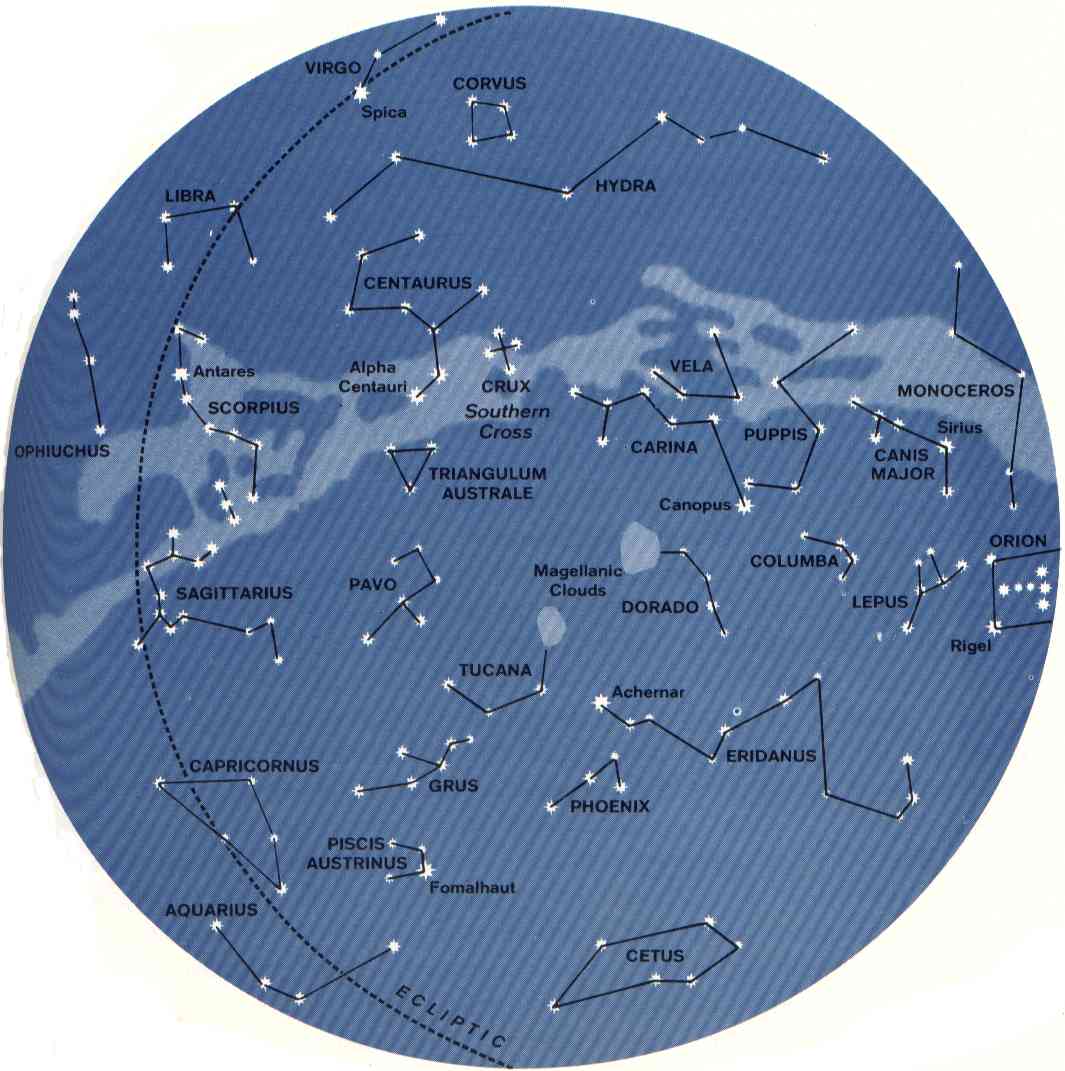
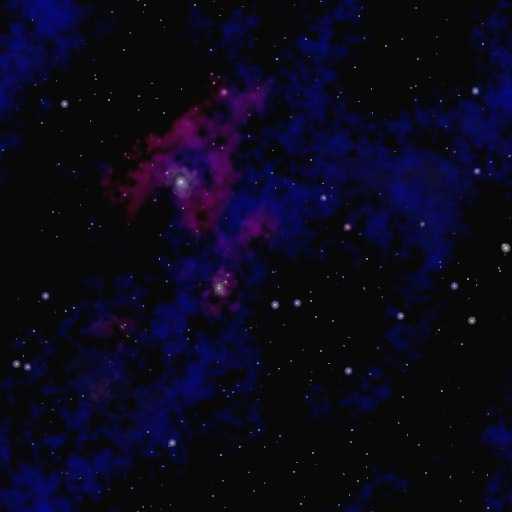
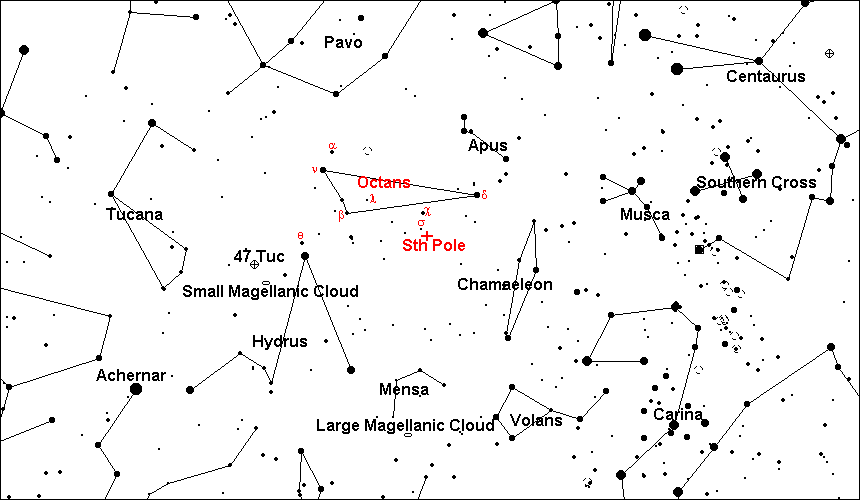
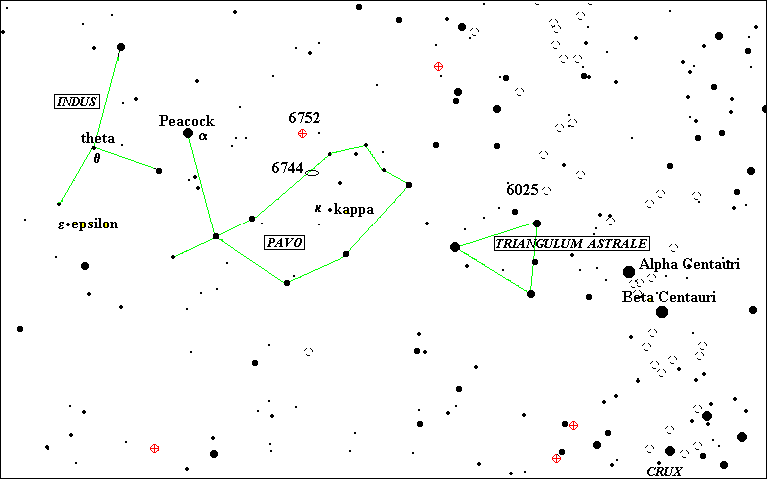


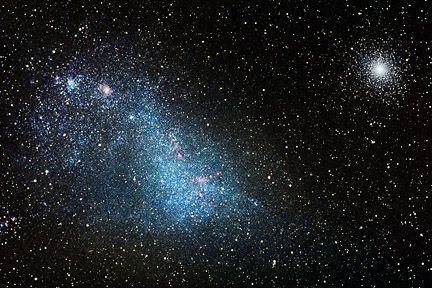
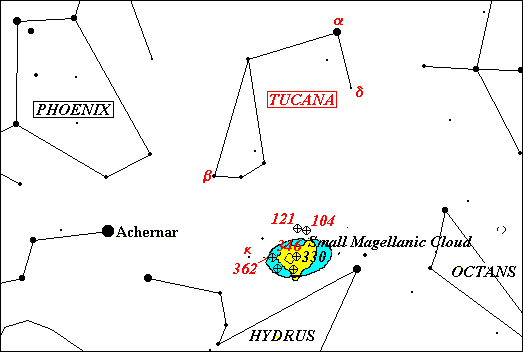
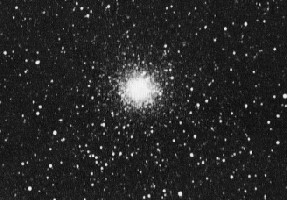
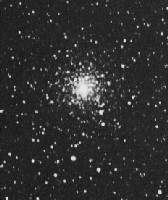


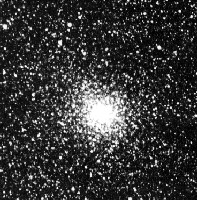
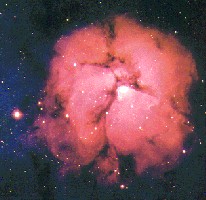
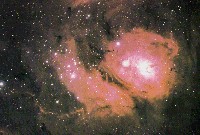
Leave a Reply